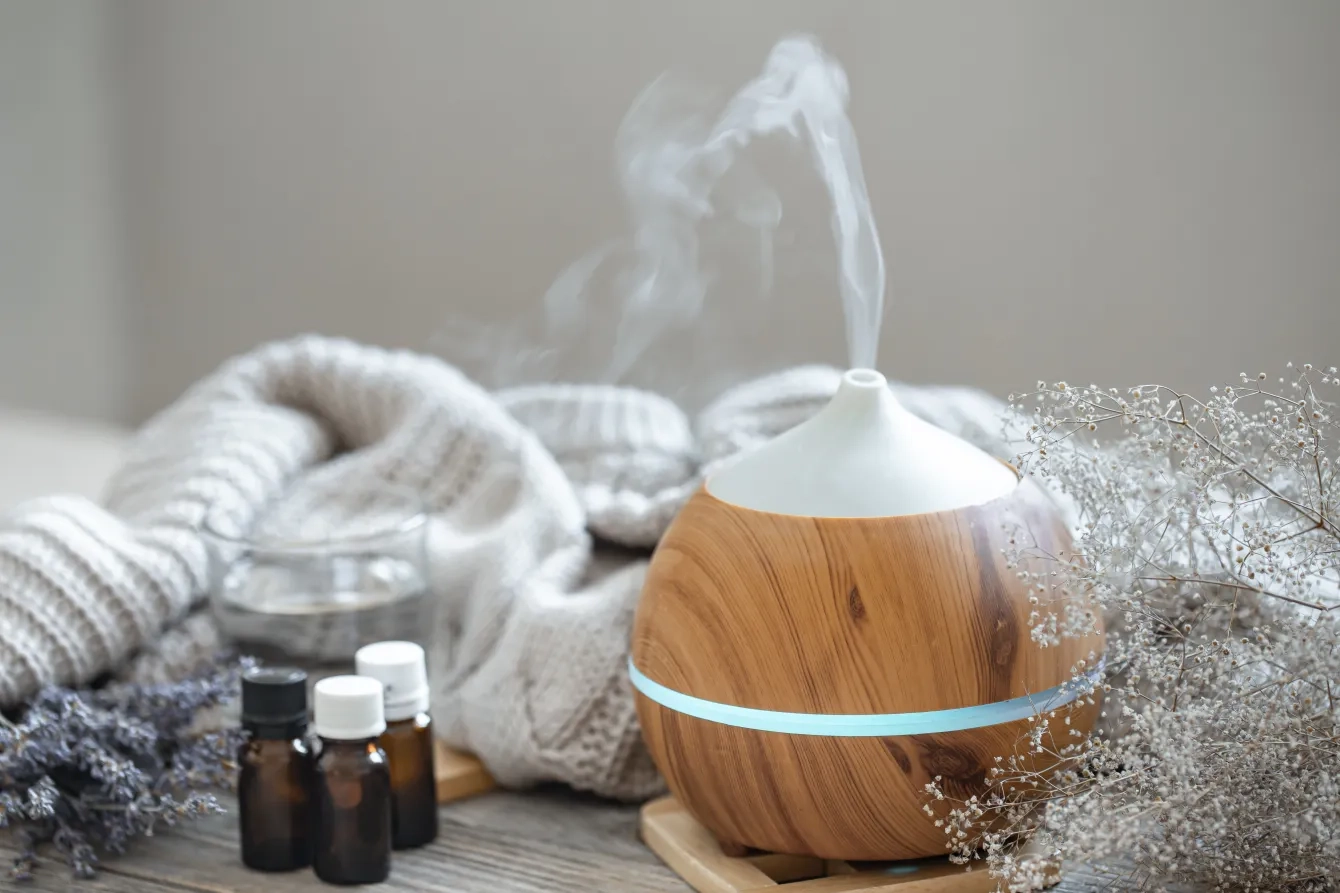
Contents:
- What is an air humidifier?
- What is the purpose of a humidifier?
- Existing types of humidifiers
- Operating principle of electrode humidifiers
- Parameters to be considered when choosing an air humidifier.
- Conclusions.
An air humidifier is a climate control unit designed mainly for increasing the humidity of indoor air. Complex air conditioning and ventilation systems may provide humidification among other things.
First, let’s discuss what we need an air humidifier for.
The main mission of a humidifier is to saturate the air with moisture up to the optimum (set) parameters.
Normally, the humidity varies between 40 and 60%. However, in dry weather during winter or summer this figure may reduce to 20-30%.
When the humidity level is low, the air becomes dry, which can cause dryness and irritation of skin, eyes, etc.
Dry air is favourable for distribution of dust, viruses, bacteria, allergens, and dust mites.
All of this can be extremely harmful to health, because:
- there is an increased risk of aggravated allergy symptoms. Dry air is especially dangerous to people who are allergic to pollen, dust, or pets;
- dissemination of infectious diseases becomes more likely. Bacteria and viruses stay in air for longer, which increases the risk of contagion;
- mucous membranes become dry, which impairs their protective function;
- the functioning of the immune system is deteriorated;
- low humidity may result in rapid fatigue affecting performance;
- dry air may be detrimental to a person’s appearance, as the skin becomes dry, loses its elasticity and natural colour.

Existing types of humidifiers
Today, there are the following types of humidifiers:
- Ultrasound: these units transform the water into droplet mist by means of ultrasound vibration with a fan delivering the steam into the room.
- Steam: these units heat and evaporate the water like an electric kettle with a fan delivering the steam into the room.
- Conventional: these units operates on a simple principle where the water from a tank flows down onto a heating element with a fan delivering the steam into the room.
- Impeller: these humidifiers are equipped with a rotating disk supplying the water into a diffuser. The diffuser atomizes the water into fine droplets and discharges the resulting humid mist into the air.
- High-pressure: these humidifiers spray the water via special nozzles under high pressure (usually 70 bar) ensuring very fine water atomization in the room.
Operating principle of electrode humidifiers
These units operate on a simple principle: a tank is filled with water, and electrodes submerged into the water are energized.
The current flowing through the water heats it up to the boiling point. The water evaporates due to boiling and enters an air duct to be distributed through all the rooms by a supply-and-exhaust unit.
Integrated automatics control the entire process and ensure it is safe for the users.
Also note! It is preferable to install the humidifier along with the air handling unit, otherwise its installation will be more complicated and expensive.
Parameters to be considered when choosing an air humidifier
Humidifiers have different capacity, and each facility requires individual calculation of the humidity deficit. The calculation considers the following key parameters:
- Desired humidity of indoor air (at the set temperature).
- Temperature and humidity of outdoor air.
- Availability and capacity of supply ventilation.
- Room size.
- Other factors that may affect the required humidifier capacity (occupancy, hygroscopic properties and moisture content in the materials, etc.).
Moisture content (absolute humidity) of the air Х1 and Х2 is determined using the ID diagram based on the set values of air temperature and relative humidity.
In order to determine the moisture content, draw a vertical line from the set temperature (on the bottom scale) up to the intersection with the curve denoted as the required humidity level. From the intersection, draw a horizontal air line the right which will show the desired value of absolute humidity at the intersection with the scale.
For example, at 23°C and 50% RH, 1 kg of dry air contains 9 g of water (that is, the moisture content is 9 g/kg). In the ID diagram shown above, the air temperature has the lower limit of -10°C. Since moisture content of cold air is very low, for temperatures below -10°C moisture content Х1 can be roughly estimated as 0.5 g/kg.
For residential rooms with outdoor air temperature equal to -20°C and indoor air temperature and humidity being +22°C and 50% respectively, typical values of moisture deficit are as follows:
- apartment / cottage with an area of 80-120 m², equipped with supply ventilation: Q = 3.3 kg/h
- apartment / cottage with an area of 120-160 m², equipped with supply ventilation: Q = 6.6 kg/h
- cottage with an area of 450 m², equipped with supply ventilation: Q = 18.8 kg/h
Once the moisture deficit is calculated, you can proceed with choosing the type and the model of your air humidifier.
Conclusions:
The use of a humidifier will allow maintaining the desired indoor climate and optimum level of humidity, providing a comfortable living and working environment.
Mycond offers a wide selection of climate control equipment ranging from air humidifiers / dehumidifiers and supply-and-exhaust units to automatic control systems that are notable for their durability, high performance, and innovative solutions.
Recommended articles: https://mycond.eu/blog/what-fan-coil-unit
https://mycond.eu/blog/ventilation-why-it-prerequisite-healthy-life
https://mycond.eu/blog/what-air-dehumidifier-and-what-do-you-need-it